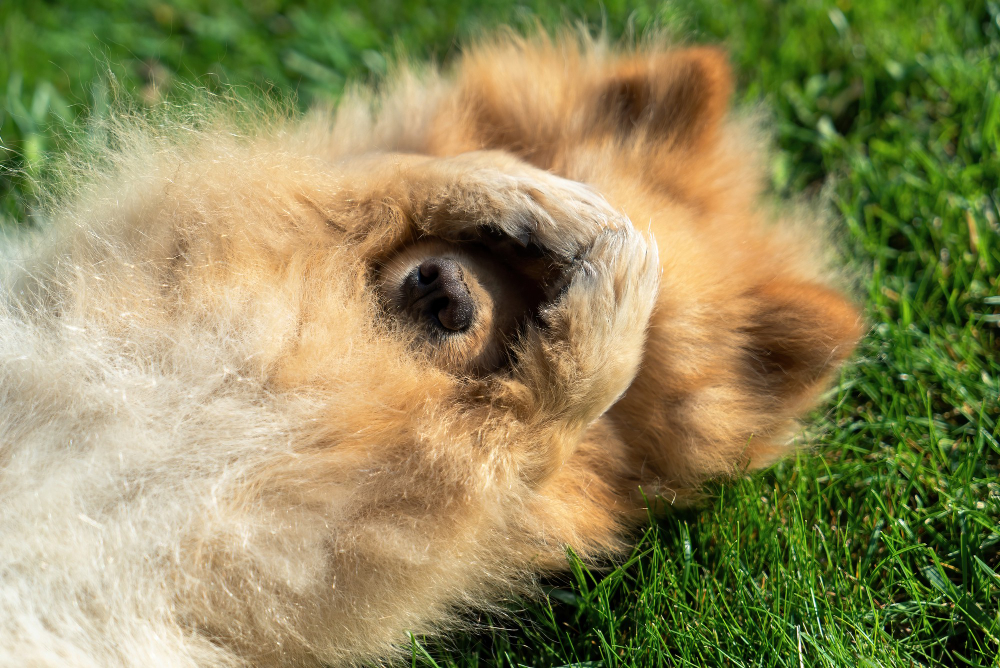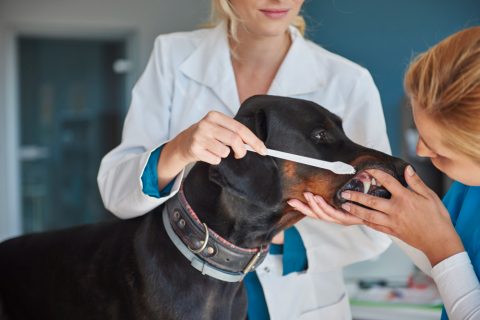Noticing something off about your dog’s private area can be concerning—especially if her vulva appears swollen. While this issue can be a normal part of your dog’s reproductive cycle, it might also be a signal that something more serious is going on.
If your female dog is licking her genital area more often than usual or seems protective of it, it’s worth taking a closer look. Below, we’ll walk you through several possible reasons for vulva swelling in dogs and what you can do to help.
Contents
1. Vaginitis in Female Dogs
Vaginitis is a common condition where the vaginal area becomes inflamed or infected. It can occur in both puppies and adult dogs and is often associated with swelling of the vulva.
What causes it?
This condition can result from:
- Bacterial infections
- Urinary tract infections (UTIs)
- Injuries
- Hormonal imbalances
- Foreign objects lodged in the vagina
What to watch for:
- Swollen, red vulva
- Frequent licking or scooting
- Cloudy or yellow discharge
- Discomfort when urinating
- Peeing more than usual
Because these symptoms overlap with other conditions, it’s best to have your vet diagnose and treat it properly.
2. Tumors or Growths Near the Vulva
In rare cases, swelling can be caused by a mass or tumor developing in or near your dog’s reproductive organs. These can be benign (non-cancerous) or malignant (cancerous).
Signs to notice:
- A noticeable lump near the vulva
- Changes in urination habits
- Foul-smelling discharge
- Rapid or unexplained increase in swelling
Early detection is key. If you notice an unusual lump or your dog’s swelling seems to worsen quickly, don’t wait—get her checked by a veterinarian as soon as possible.
3. Injury or Irritation
Sometimes, the cause is as simple as a minor injury. Dogs who play roughly or spend time outdoors may scrape or bruise their vulva without you noticing.
Common causes include:
- Rough play or jumping
- Foreign objects like twigs or debris
- Scratching due to allergies or itching
While minor swelling may resolve on its own, it’s important to monitor the area. If you see a stuck object or if your dog seems in pain, a vet visit is the safest bet.
4. Vaginal Hyperplasia
This condition typically occurs in unspayed females during their heat cycle. The tissue inside the vagina enlarges and sometimes protrudes visibly from the vulva, forming what looks like a pink, donut-shaped mass.
Key points:
- Most often occurs during heat
- Can look alarming but is often painless
- In severe cases, may block urination
Vaginal hyperplasia often resolves once the heat cycle ends. However, if your dog has trouble urinating or the tissue appears damaged, a vet should intervene.
5. Post-Spay Swelling
After being spayed, some dogs experience temporary swelling of the vulva. This is a normal post-surgical reaction and usually goes away within a few days.
What’s normal vs. what’s not?
- Normal: Mild swelling, no redness, no foul odor
- Concerning: Worsening swelling, discharge, fever, or behavioral changes
If you’re ever unsure whether the healing process is on track, don’t hesitate to call your vet for advice.

6. Heat Cycle Swelling
In unspayed females, vulva swelling is a natural part of the reproductive cycle. As your dog enters estrus (heat), the vulva may become noticeably larger and softer.
Signs she’s in heat:
- Swollen vulva
- Bloody or pink discharge
- Frequent urination
- Increased interest from male dogs
- Behavioral changes (clinginess, restlessness)
This swelling typically lasts for 1–2 weeks and should go down once the heat cycle ends. If you’re not planning to breed your dog, talk to your vet about spaying options to avoid future hormonal cycles.
When to See a Vet
Vulva swelling in dogs can be completely harmless—or a sign of something more serious. You should contact your vet if:
- Swelling appears suddenly and doesn’t go away in a few days
- Your dog is in pain, lethargic, or avoiding urination
- There’s discharge, odor, or obvious discomfort
- You notice any masses or strange growths
Veterinarians may perform diagnostic tests like urinalysis, physical exams, or imaging to determine the cause and guide appropriate treatment.
How You Can Help at Home
While some causes require professional treatment, you can still support your dog’s comfort with a few at-home measures:
- Keep the area clean: Use a damp cloth and gentle pet wipes.
- Discourage excessive licking: A cone collar may help prevent irritation.
- Limit rough play: Especially during recovery from heat or surgery.
- Monitor closely: Track any changes in swelling, behavior, or discharge.
Final Thoughts
A swollen vulva in dogs isn’t always a reason to panic—but it should never be ignored. Whether it’s a harmless sign of heat or a potential health concern, knowing what’s normal and what’s not can make all the difference.
By keeping a watchful eye and working closely with your vet, you’ll be in the best position to protect your dog’s reproductive health and overall well-being.









